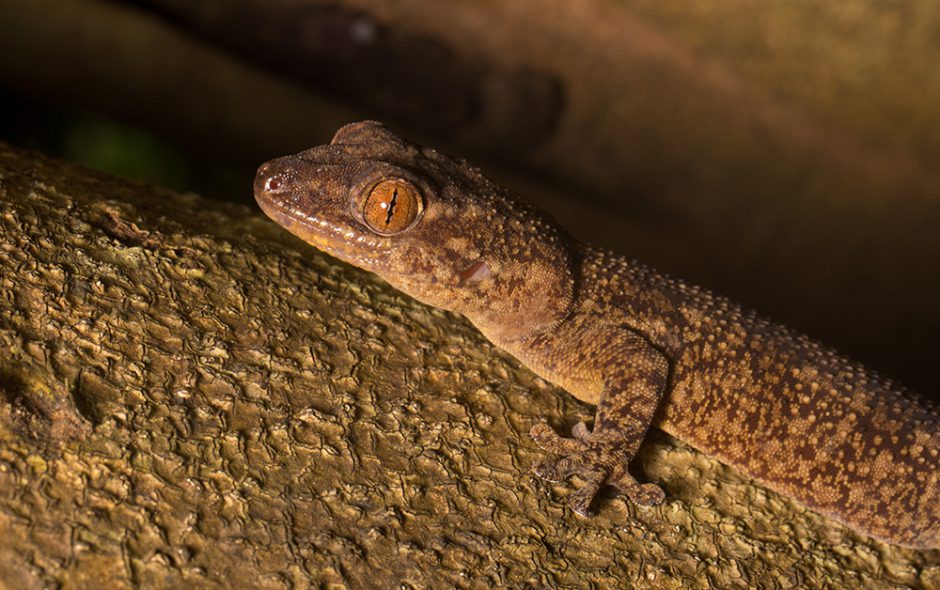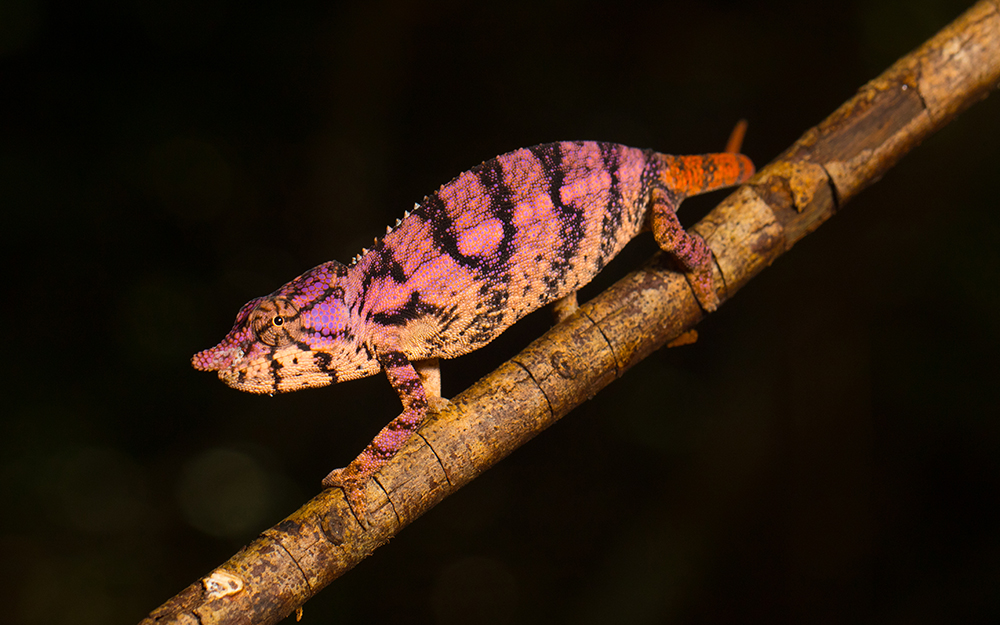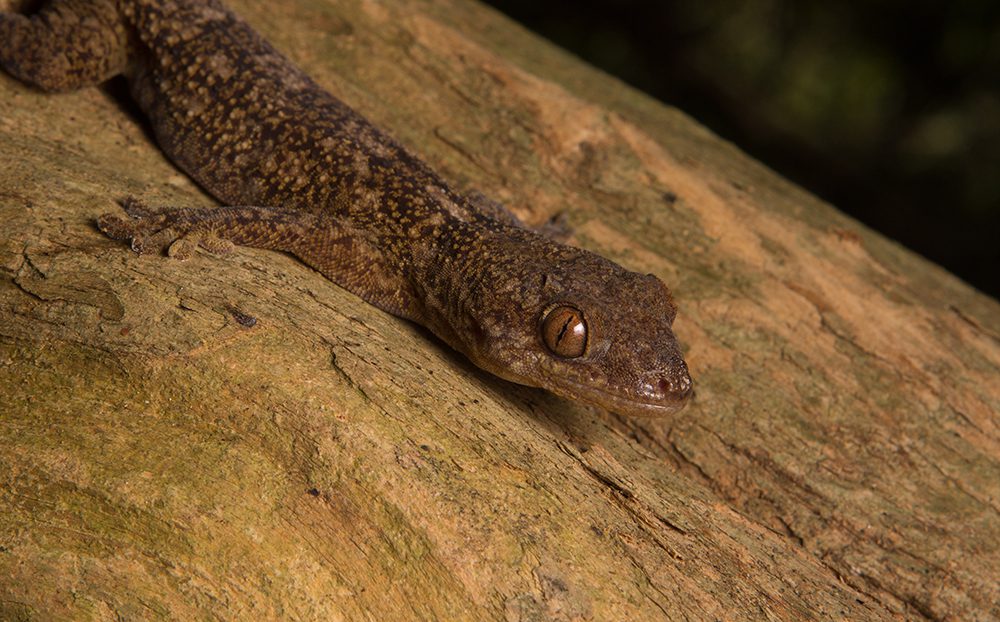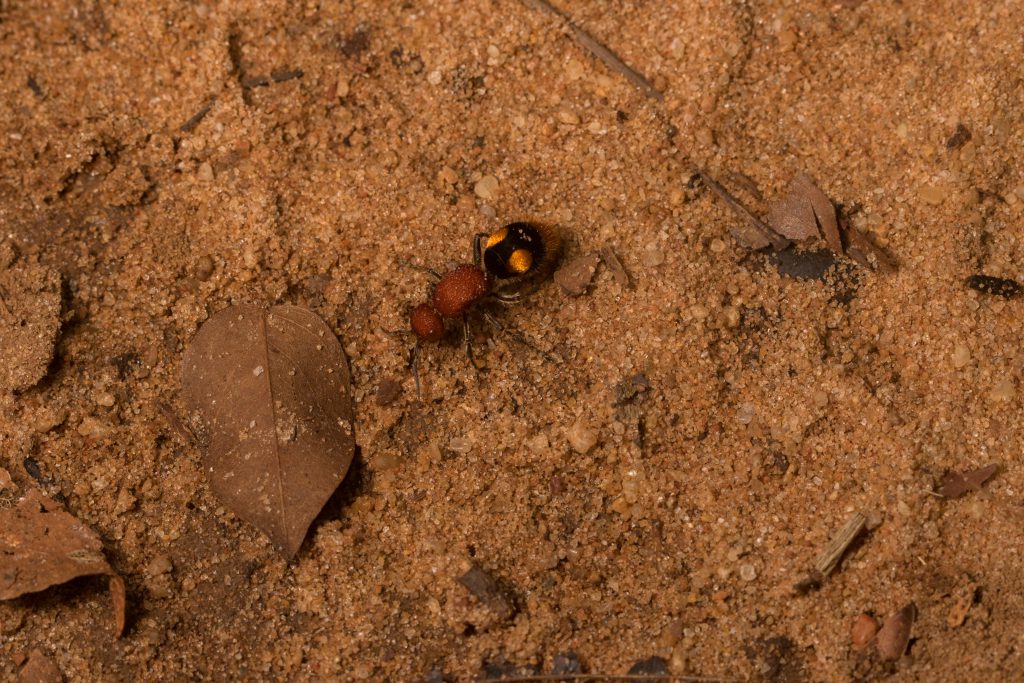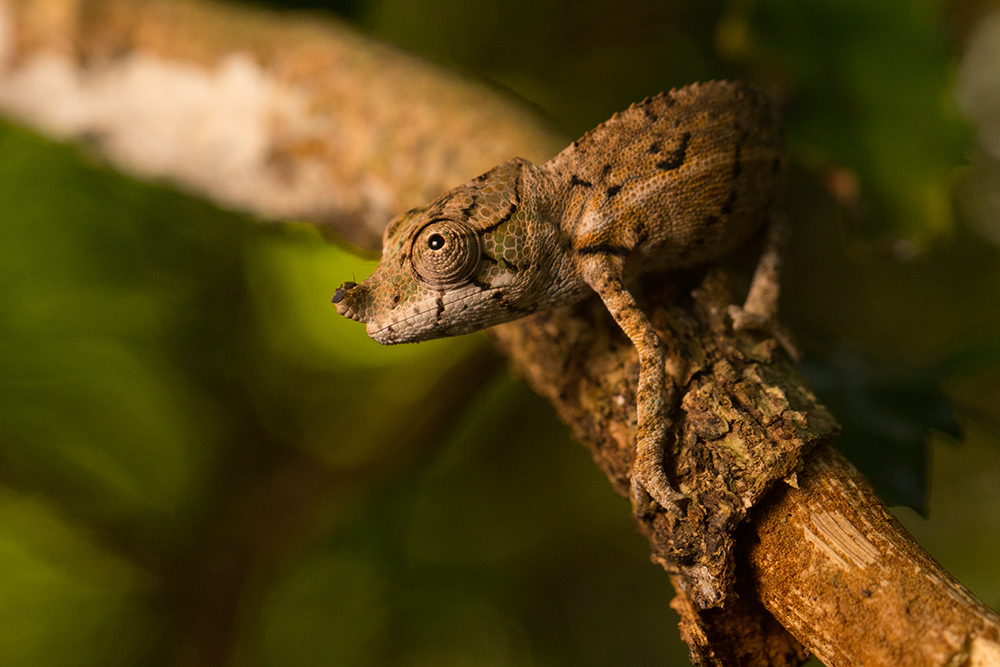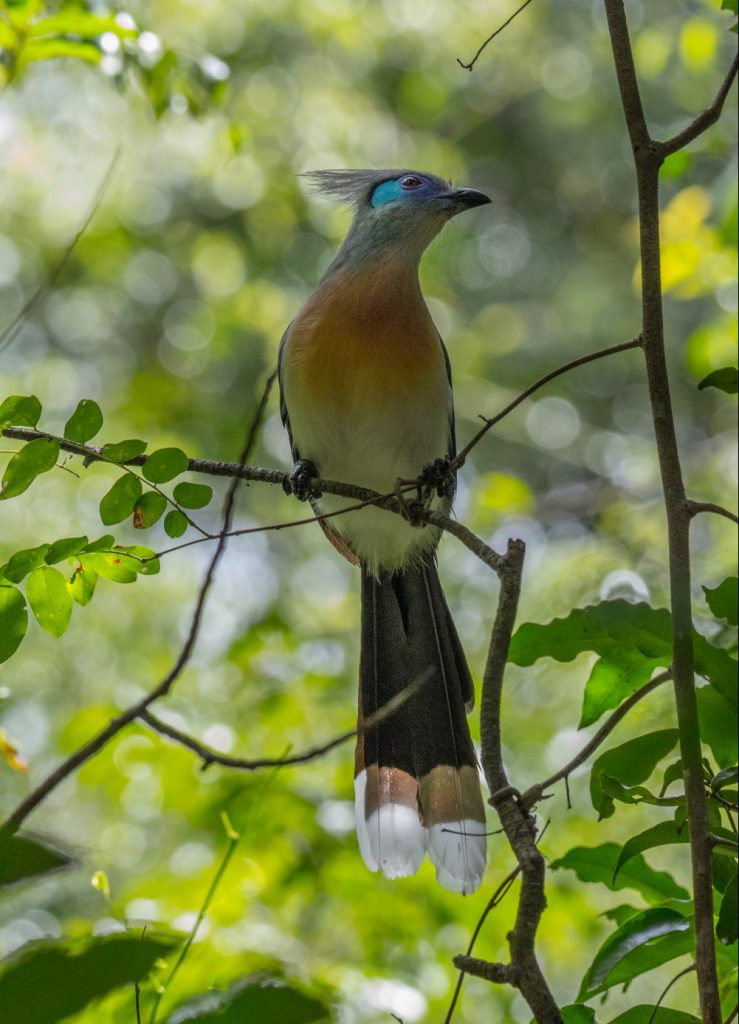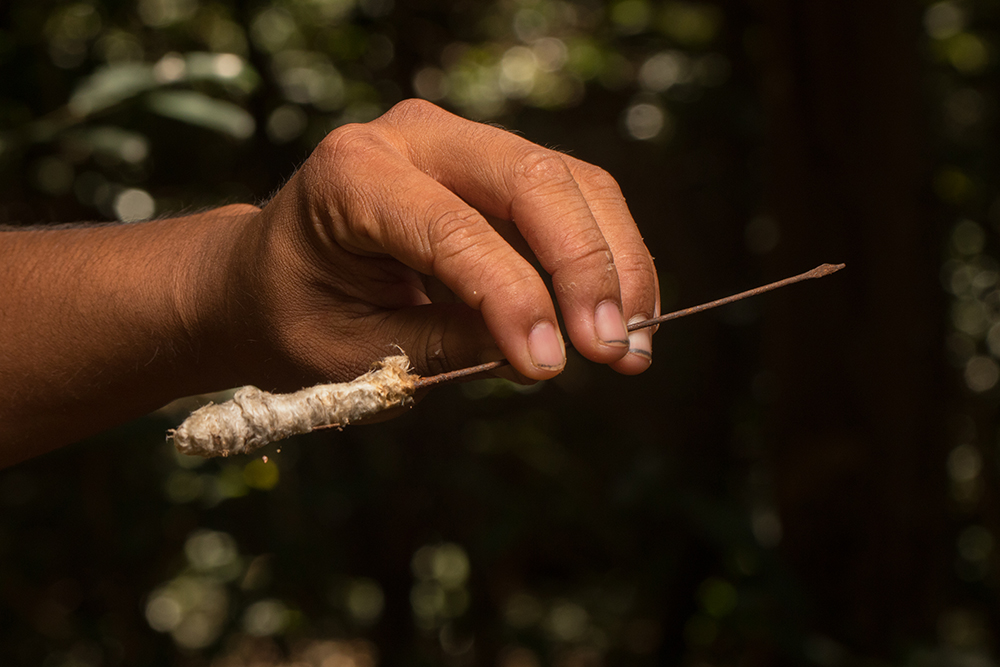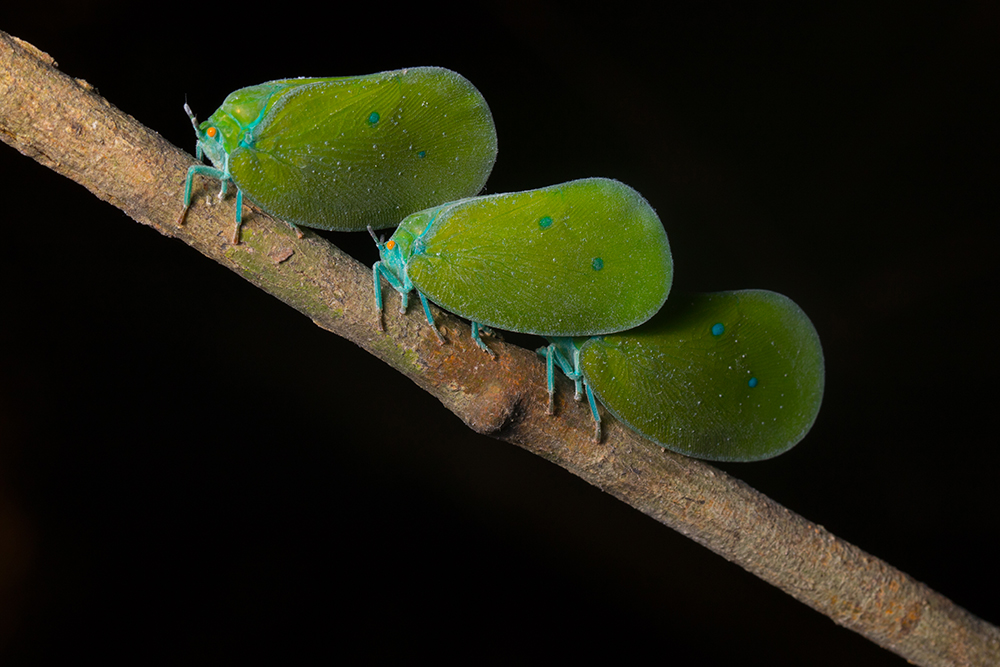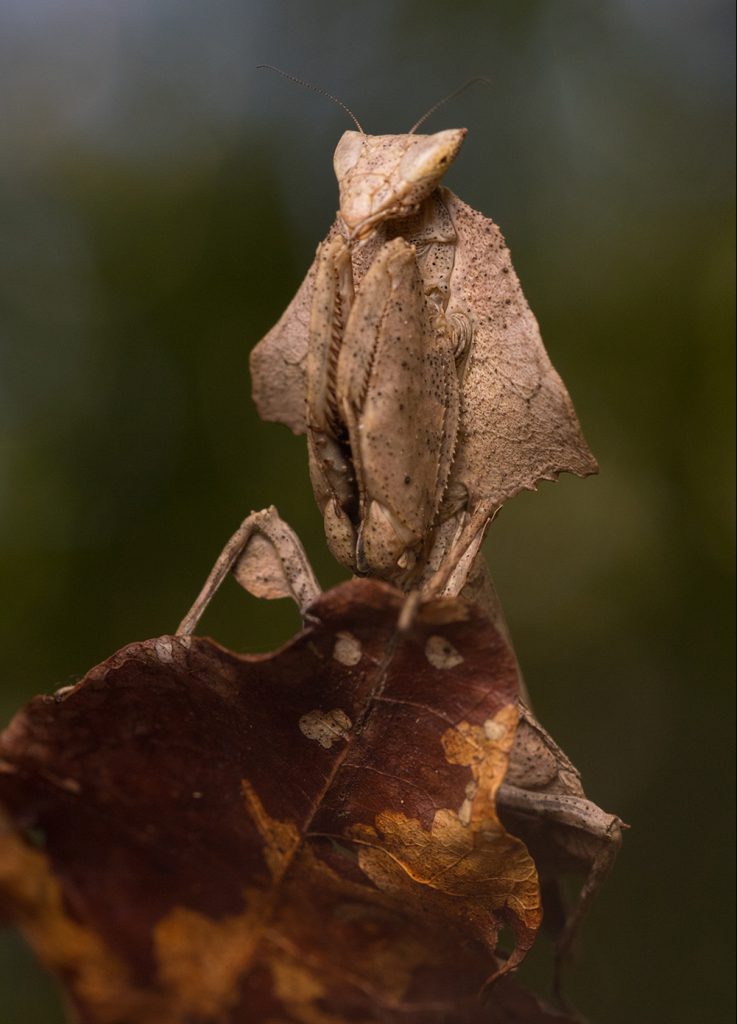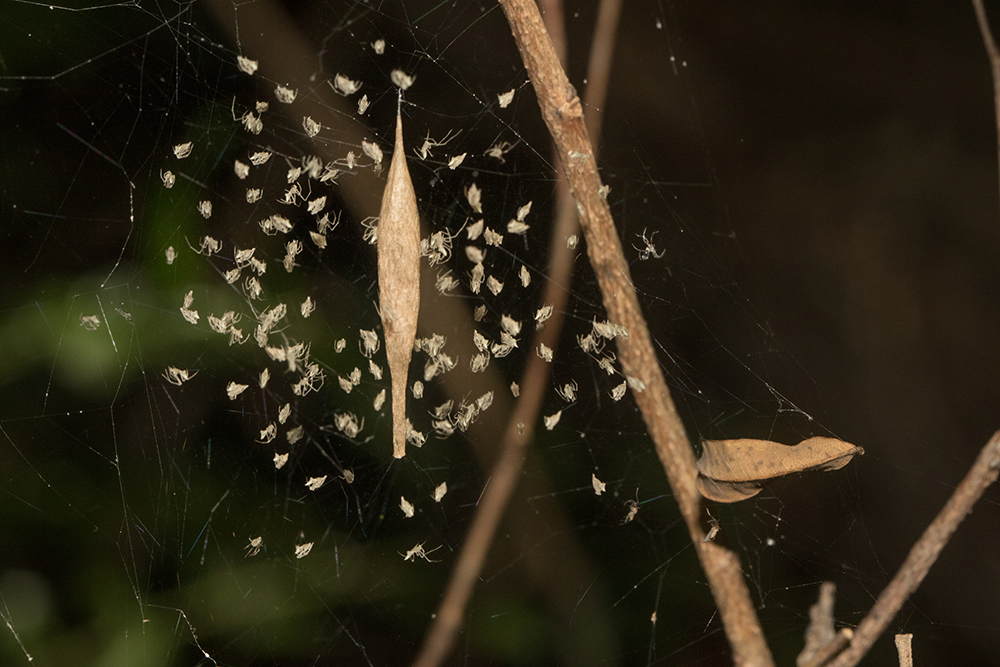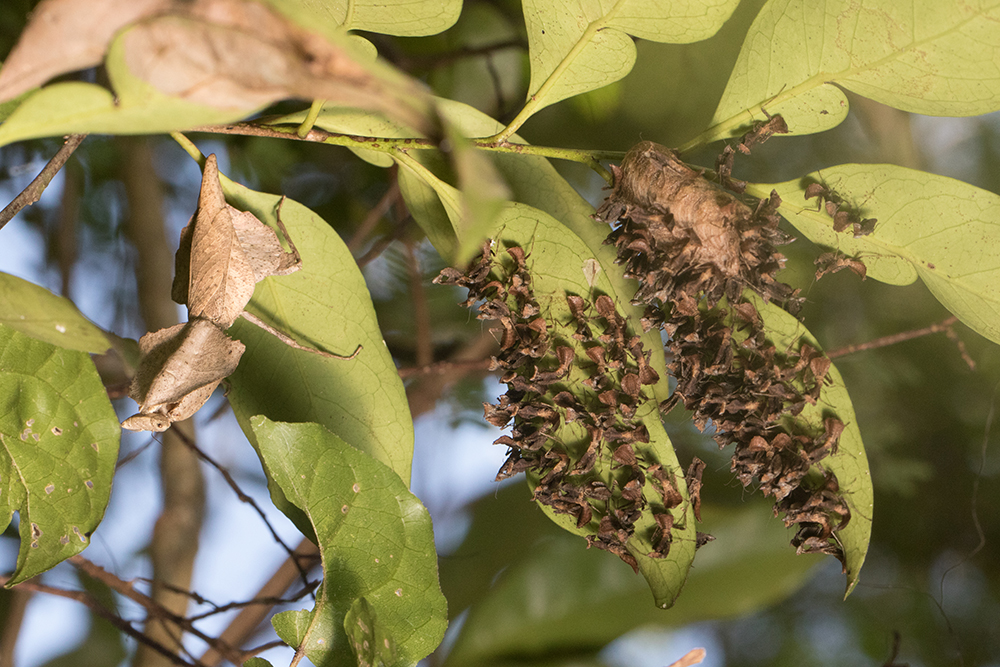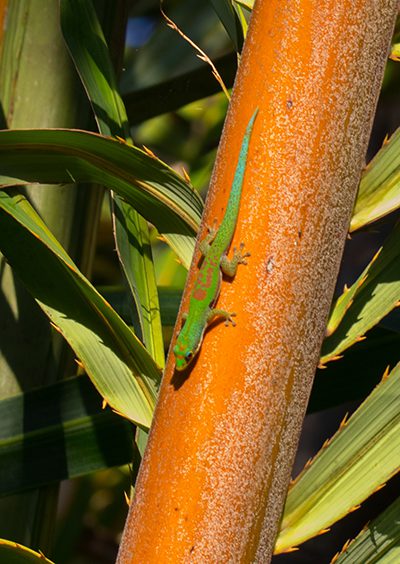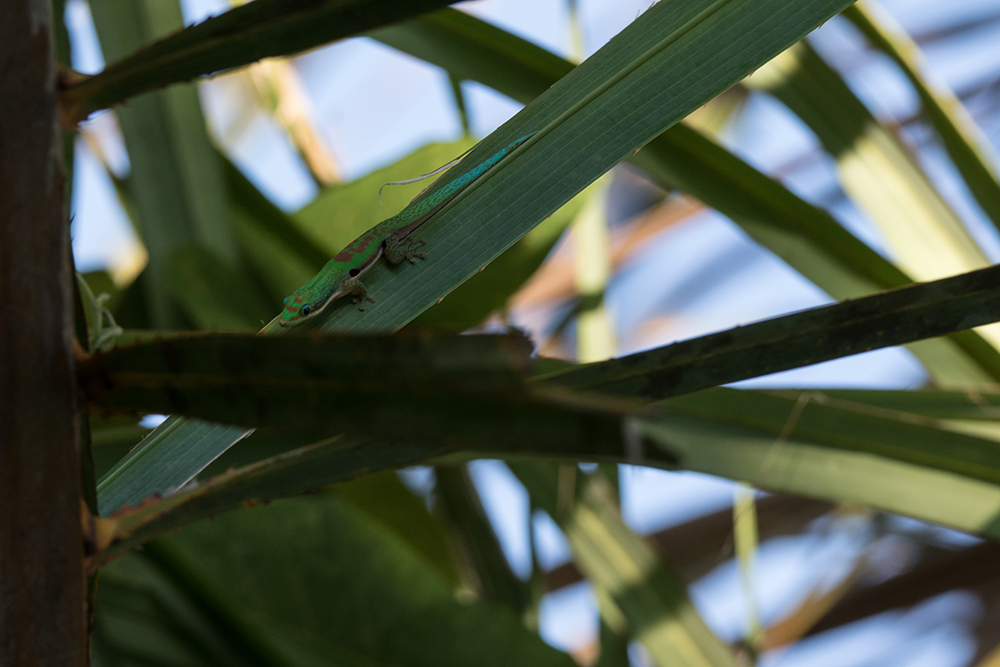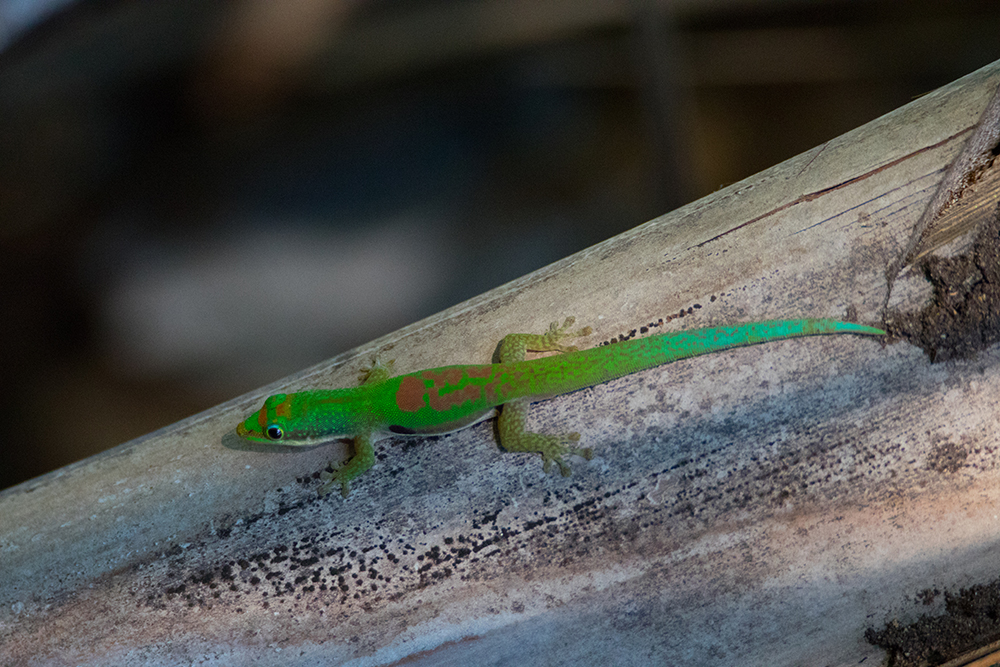It rained for hours in the night. No, actually, it was pouring. I have never experienced that here in the dry forest at the end of the rainy season. Rain was rare here when I was here. When the roosters start crowing, I am falling asleep. A short time later I am woken up and walk over to breakfast a bit drowsy. The Coquerel Sifakas are already awake too, a small family is jumping around over the toilet and shower house.
When the guides join for breakfast – there is pineapple-banana fruit salad, savory Crepes with onions and sugared fluffy stuff – the actual plan for today is first canceled. We cannot descend into the Ambalabongo Canyon after the heavy rain of the night. The sand often turns into quicksand after heavy rainfall, it would be too dangerous. We decide to skip the visit of the savannah and the gorge, but still, visit the other side of the forest today. I get a bottle of Coke from the restaurant, fill my Chilly Bottle and put another bottle of Eau Vive on top of my backpack.
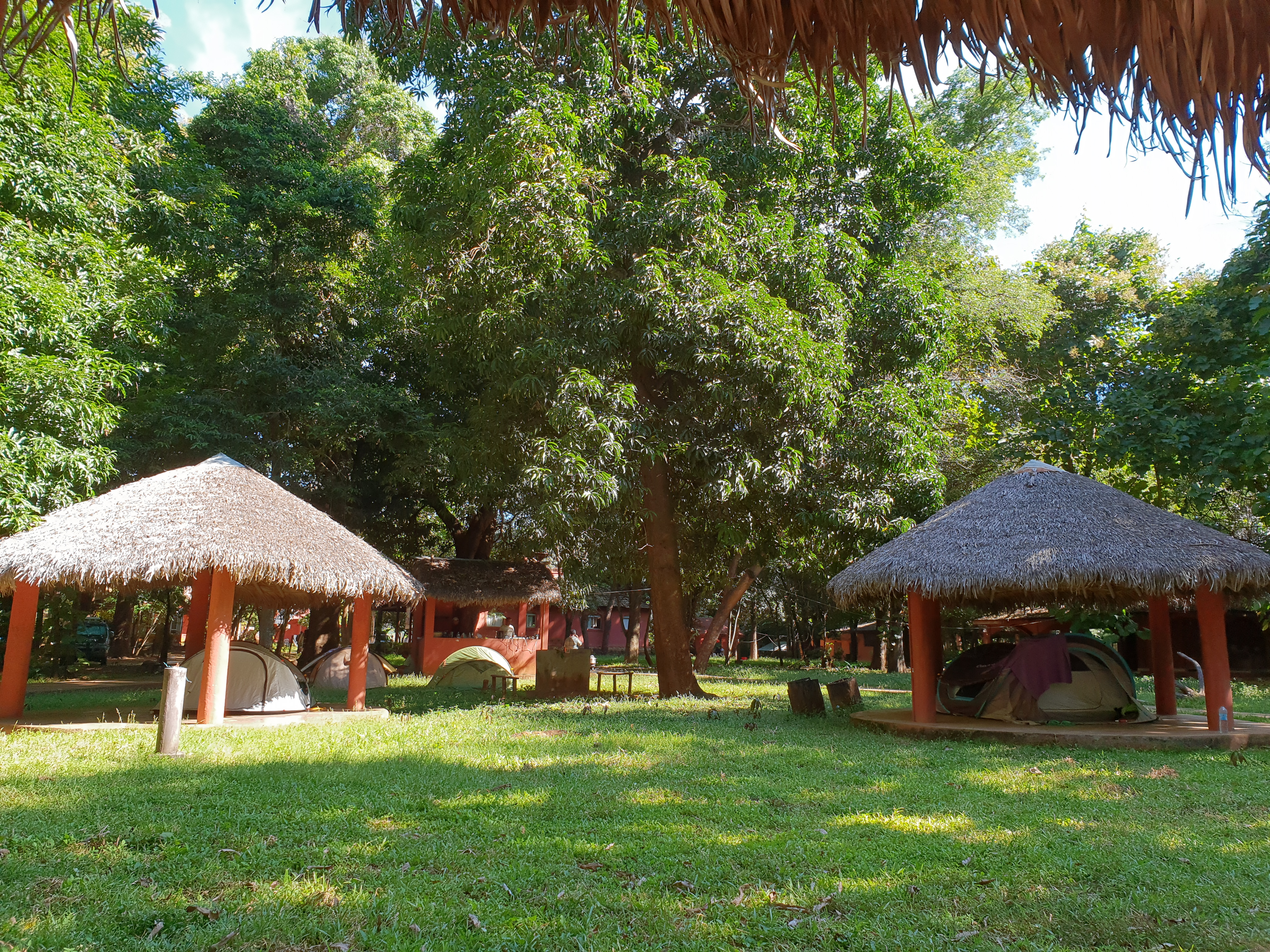
Today we all go together in a group, we are not that many. But we don’t even make it over the edge of the campground in the first two hours. In the corner, where a few steps lead to the sand path in the forest, Ndrema discovers small, golden-green frogs (Boophis tephraeomystax) on some plants. They are standing in the middle of the garbage. An old sandal, a piece of a rucksack and various plastic scrap are lying in the clay on the ground. Some tiny brown frogs are not bothered by this, they jump under your feet when you walk. Meanwhile, Corinne discovers some geckos on a broken tree stump next to a pond. Markus has discovered two kingfishers sitting on reed stalks at the pond itself. Unfortunately in the shade, you don’t get a good photo under the trees here.
Eventually, we start walking. Again we don’t get very far. But at least we are still so close to the camp that one or the other simply walks back to the sanitary house to get out. When Tanala asks Dimby irritatedly where a certain guest – I call him Em for the time being – has gone, the shrugging and with a wonderful Malagasy accent in German the answer is only: “Poop?” Well, it’s more situation comedy. Probably wouldn’t find it funny if you weren’t there. But it was enormously funny, I can assure you.
After not even 200 meters the first Furcifer rhinoceratus are found, and they are really beautiful. Apparently the rain during the night has brought the activity of the reptiles to a maximum. The second female of Furcifer rhinoceratus sits at foot level on a bent root, it still has a small molt on its nose. A young of the species sits further to the left on the path. A few meters further on there is a small Madagascar iguana sitting curiously on a tree trunk at head height. He lets me very patiently test my fisheye lens, with which I really, really have to get very, very close to my subjects. For the right distance, I almost have to tap the little iguana’s nose with the lens. After a good two hours, maybe it was three, I continue. In the most comfortable amble, we walk up sandy steps to the top of a hill.
Markus discovers the first adult male of Furcifer rhinoceratus shortly before a road junction. It almost runs over his feet on the ground. A little later it is clear what the beautifully colored male wanted: A pregnant female is digging a hole at the side of the path to lay her eggs. While digging, she tracks down a kind of wasp that was obviously hidden in the sandy ground. The wasp excitedly flies into the cave again and again, but the chameleon female cannot be driven away and continues to dig calmly. Apparently the male cannot wait to take advantage of his last opportunity of the rainy season. Another female sits in the branches not far away – the male also likes to show her his most beautiful colors. And he is not only good at grey – he shows himself in yellow, green and light blue, a really fantastic animal.
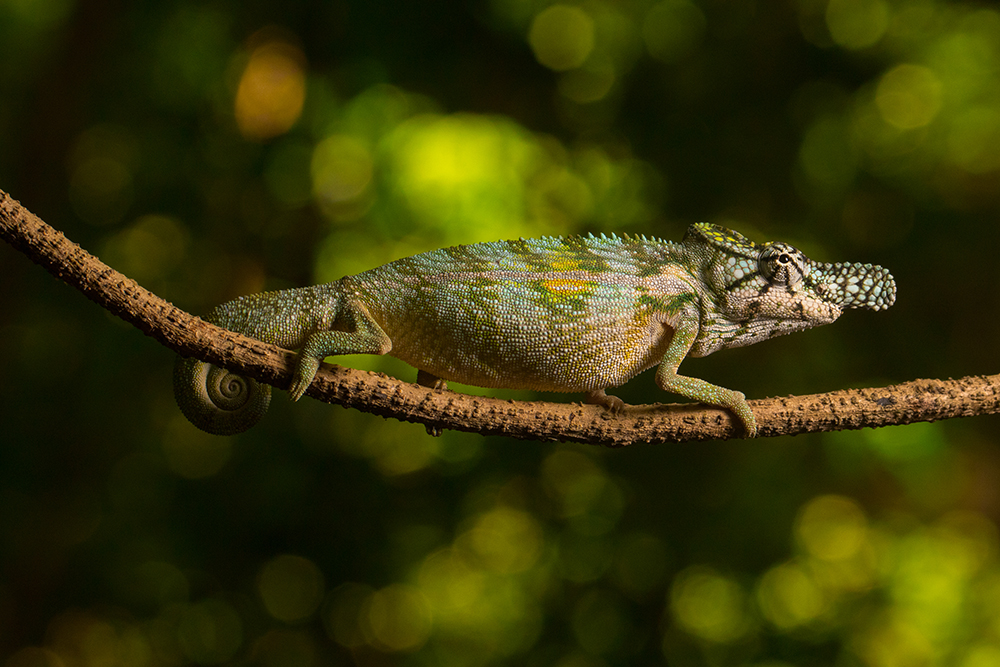
In the sand in the middle of the fork in the road, Ndrema discovers something else, less beautiful: a metal arrow, weighted down with cotton at the end. Such arrows are used for the – of course illegal – hunting of lemurs here in the forest. The arrow is a bit rusty, but it has certainly been used last in this rainy season. A rather sad, but unfortunately very real find. Where people are bitterly poor, they also look for food in the forest. And who on Madagascar protects the borders of a national park…
A little lost in thought, I walk on. Ndrema lets birdcalls run on his mobile phone all the time, most of which he has recorded himself in the forest. In fact, he seems to be able to attract birds with them. A Crested Coua suddenly sits on a branch just three meters away from Tanala. I sneak next to him and can take a quick photo before the agile bird jumps a little deeper into the bushes. The Crested Coua has disappeared just as quickly as it appeared. Ndrema runs warning calls from Paradise Flycatchers. To my astonishment, the attraction of the birds works out well – several Paradise Flycatchers promptly appear, including an “untypical” red-colored male, which can only be recognized by its unusually long feather tail. The males are actually bluish-white and black.
We walk up a hill, follow some steps and land between some old, partly hollow tree trunks in the middle of the dry forest. Inside a hollow trunk is a Blaesodactylus ambonihazo, a gecko. To get a photo of it I crawl through the bushes to the right of the tree, but somehow I still can’t get close to the tree. The bushes are too thick. But that doesn’t matter, because Ndrema has discovered another gecko of the same species on the other side of the path, maybe fifteen meters away. And it is much more photogenic, also in a hollow tree trunk, but much lower. And it doesn’t move away despite the “spectators”, which would be actually typical for these geckos. Apparently the rain in the night has pushed the geckos further down into the trees. José finds a third Blaesodactylus ambonihazo halfway down the road, also sitting in a dead tree trunk, and also at a height that is easy to photograph. At the same tree, there is something smaller, but nice to discover: The funny little insects with the white “hair”. Unfortunately, I forget the insects because of the enthusiasm for the beautiful geckos.
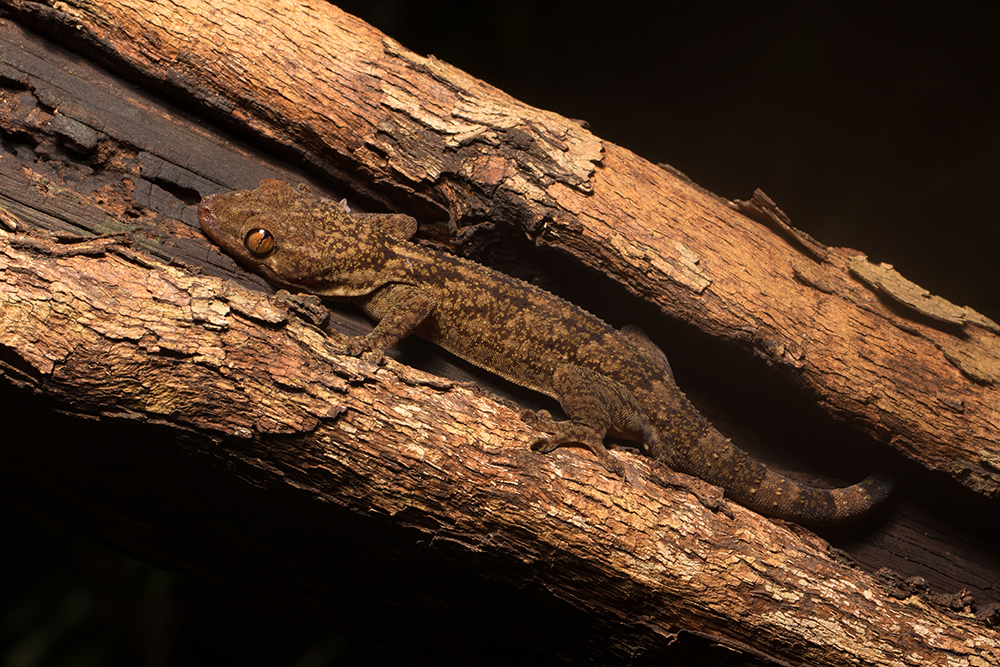 Blaesodactylus ambonihazo
Blaesodactylus ambonihazo
Finally we reach the straight, very wide and sandy path directly to the gorge or the edge of the forest. The vegetation is lower here and it is already incredibly hot. The sweat is already running from my forehead again. Democratically we vote whether we really want to walk through the savannah to the edge of the canyon to have a look from above. One decides against it (what I am a little bit pleased, the sweat is really running in streams even without the burning savannah). So we slowly start the way back. In the middle of a crossing of wide sandy paths, Philipp finds a small praying mantis on a leaf, sitting directly above a newly hatched ootheca. A good 50 tiny praying mantises sit like little soldiers lined up next to each other under and on two leaves on which the ootheca is still hanging. Here too, the rain has hit – in dry weather, the insects do not hatch. The adult mantid wears an impressive back shield and is not at all nervous and hectic, as mantids like to be when taking pictures. Some of the group are already walking towards the camp, the thirst for beer spurs us on.
I’m staying with a few others. But at some point we have to stop taking pictures – sweat flies try to eat us alive. As I take my backpack down from the temporary bench of a tree trunk and concrete supports, I inhale a sweat fly. And cough it up again. Quickly I follow the others back towards the camp, first along the gently sloping sand path, then down the stairs past the viewpoint. I stop only briefly at the lookout point – the view hasn’t changed. Marco still wants to fly with the drone, I don’t have to watch that. Together with Corinne and Martin, I follow the way down some more steps and another good kilometer to the camp. On the way, we discover a strangely shaped spider cocoon from which spiderlings have just hatched. At each crossroads, Corinne paints arrows with a stick into the sand so that the others can find their way back safely. I am almost sure that Dimby knows the way back. If I can walk it in my sleep, then he certainly can.
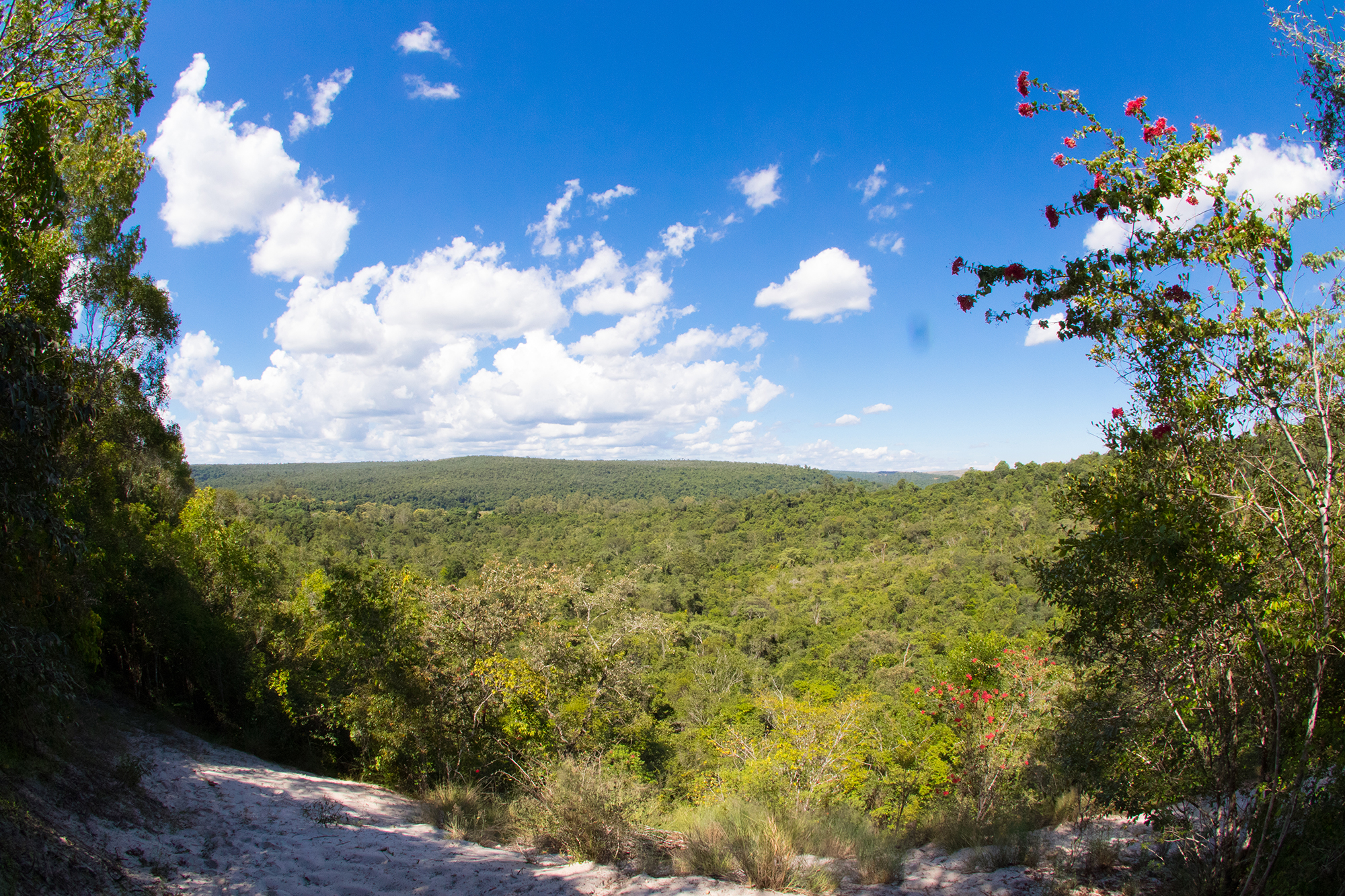
In total we found about twenty Furcifer rhinoceratus today – what a successful day! I think the heavy rain during the night had its share in it. In the camp, everyone is already waiting for us, who took pictures of the mantids earlier. There is a late lunch with real cheese made in Antsirabe (Tiko is back!), a kind of beef ragout and rice. The chilled Fresh bottle, fresh from the fridge of the adjacent restaurant, just feels good.
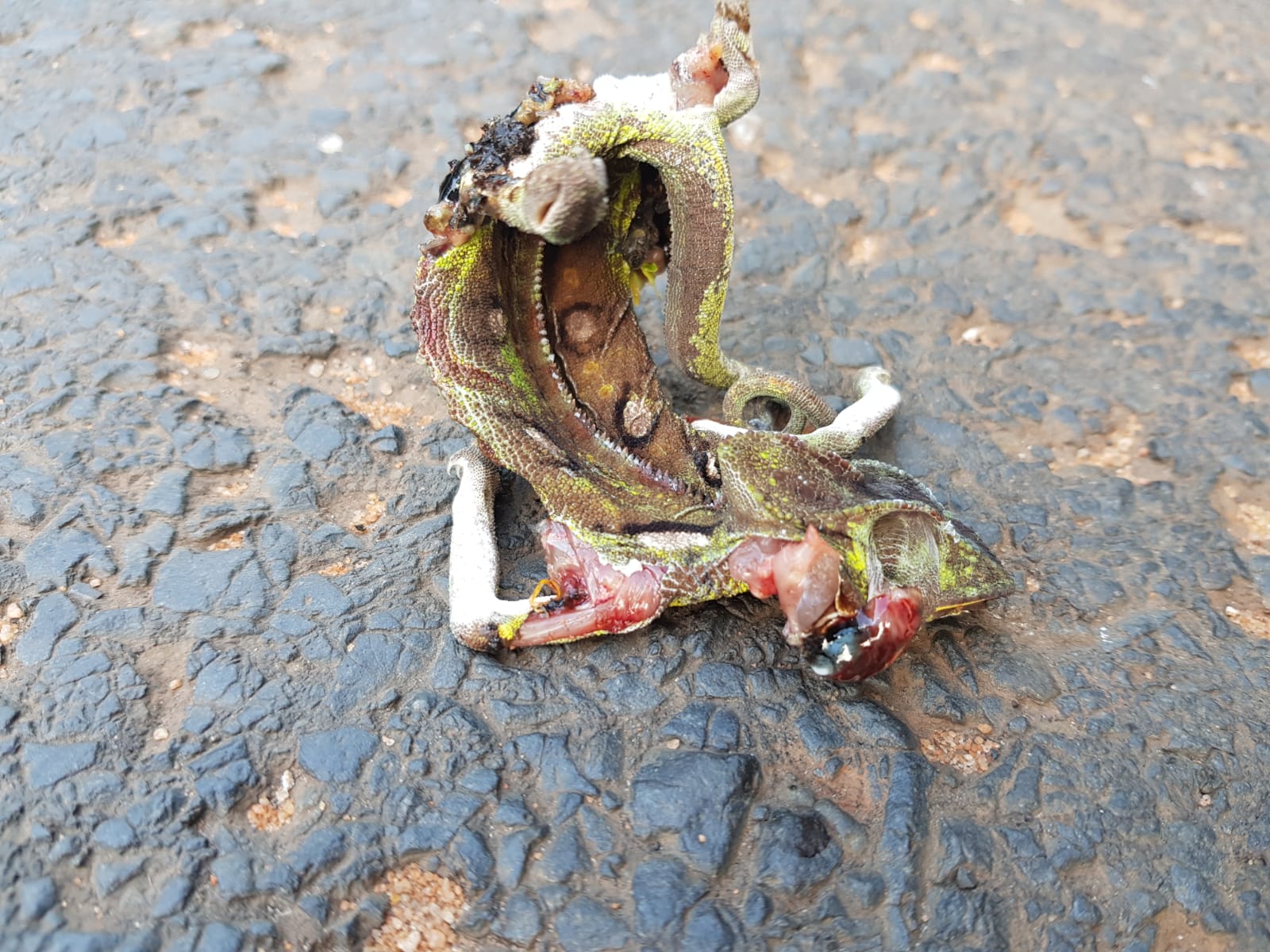
In the late afternoon Marco, Markus, Philipp and I leave again with Ndrema. There is said to be another subspecies of certain day geckos, Phelsuma lineata bombetokensis. But not everywhere here in the dry forest, only at certain places. We walk along the asphalt road to a lemon plantation with amazingly low mowed grass. On the way we discover a flattened Furcifer oustaleti at the roadside, one half of its body sticking out grotesquely from the ground.
We descend a slope, then stand in front of some huge raffia palms right at the lake Ravelobe. But only one of the palms is actually accessible. The others are standing in water through which somehow none of us wants to wade. Crocodiles, you remember. Instead, we rather stomp around on the not very clear shore, whose humid ground is covered by old palm leaves.
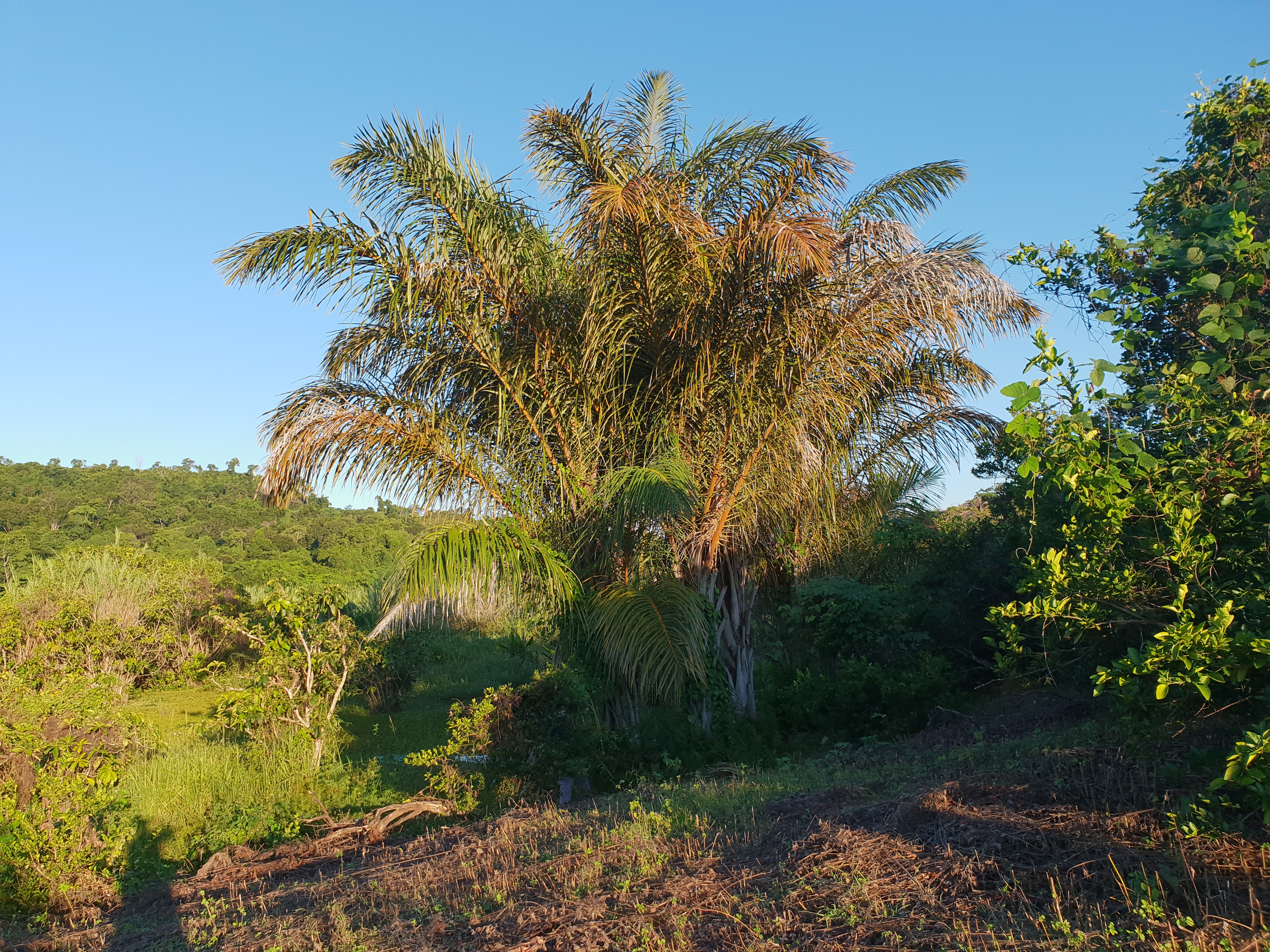
Right at the foot of the huge old raffia palm, I discover scaly skin between the green. An old Madagascar boa, Sanzinia volontany, has taken a nap here. She is tall and apparently already an older model who is very patient when it comes to taking photos. From the large palm tree, a huge spider’s web also reaches over to a bush on the shore – in the middle of it all, a palm-sized Trichonephila can be seen. But in fact, we also discover the sought-after day geckos. Two or three are scurrying around in the palm tree. Only one is curious enough to get further down. A somewhat over-motivated Ndrema then jumps off and hits a low palm leaf – which only causes the gecko to disappear deeper into the green. Well. Unfortunately, we can hardly convince him to come out again. But at least – we found the geckos.
So close to the water it is incredibly hot and stuffy. Already after only half an hour, I flee again up the slope and between the gnarled, squat lemon trees to the road. Directly cooler here! On the way back the Furcifer oustaleti from earlier is even flatter. Now nothing sticks out at all, there is only a few millimeters thick layer left on the hot asphalt.
Actually I wanted to take a shower, but the eight-legged occupants of the showers are still there. I death-defyingly decide to simply shower with the door wide open. I can’t see what’s behind the door. And then it doesn’t even feel there. Psychology is so simple. If you only look at the floor when taking a shower, you can’t see what else is wandering around on the walls. But you find rusty razor blades.
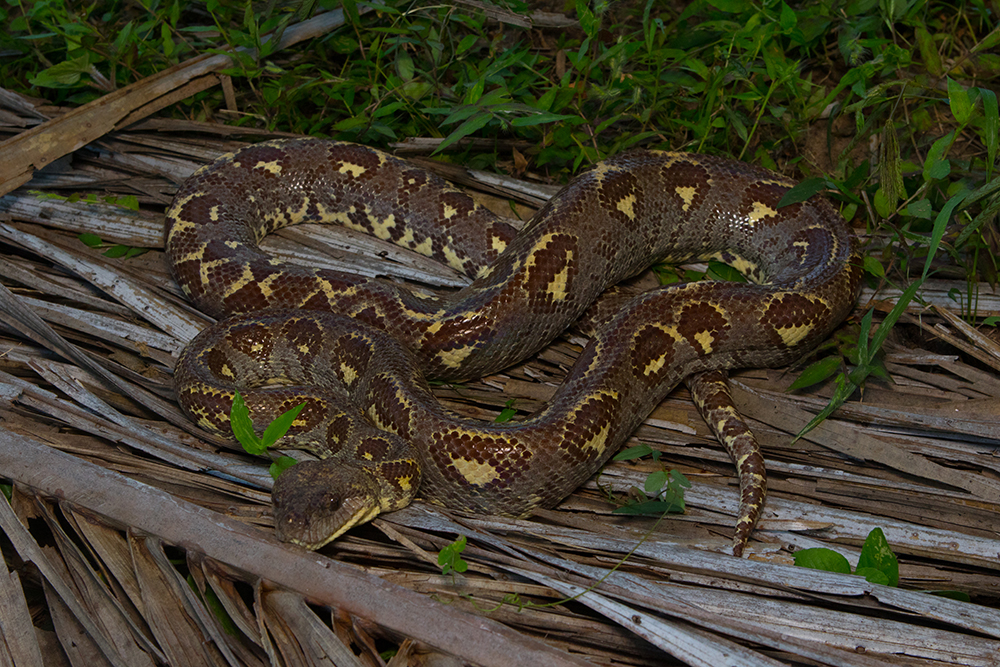
For dinner, we have the ducks that were still alive yesterday sitting in the kitchen. However, they are no longer alive but tastily prepared in a sauce of rice. Philipp is already running around the campground again, enjoying huge water bugs and looking for gigantic atomic crickets with Ndrema. He also explains extensively what the little animals are actually called, I just don’t know anymore. The atomic crickets were too loud. Loud is also the forked macaws, who let the evening end with their crazy loud screams. I would like to see one!
